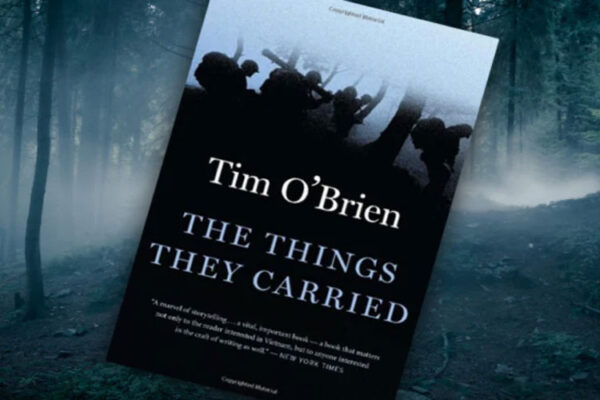
| Author | Year | Language | Pages |
| Robert T. Kiyosaki | 1997 | English | 253 |
Genre: Personal Finance. Self-Help. Non-Fiction
Rich Dad Poor Dad by Robert Kiyosaki is a personal finance classic. It contrasts the financial philosophies of Kiyosaki’s “Poor Dad” (his real father) and “Rich Dad” (his friend’s father). While his “Poor Dad” had a stable job and valued traditional education, he often struggled financially. In contrast, “Rich Dad” was an uneducated entrepreneur who built wealth through smart financial choices and risk-taking.
The book introduces readers to concepts like financial literacy, investing, and the difference between assets and liabilities. It challenges traditional thinking about money and emphasizes the importance of building a financial foundation that leads to wealth and financial freedom. This book has sold millions of copies worldwide, becoming a foundational guide for many in understanding money management and wealth-building strategies.
The lessons Kiyosaki shares are based on his personal experiences and the contrasting viewpoints of his two father figures. It pushes the idea that education about money is key to achieving financial independence. Through simple storytelling, Kiyosaki breaks down complex financial ideas, making them accessible to the average person. In the sections that follow, we will discuss the main lessons and principles that the book covers.
The Rich Don’t Work for Money
The book highlights a key difference between the wealthy and the rest: the rich don’t work for money; they make money work for them. Most people rely on paychecks for financial security. They get trapped in the “rat race”—working long hours just to pay bills. Fear of losing job security often keeps them stuck, missing out on other opportunities for wealth.
Kiyosaki illustrates this through a story from his childhood. His “Rich Dad” taught him and his friend that jobs are a short-term solution to a long-term problem. Instead of working for money, they should learn to build wealth through assets. This mindset shift is what separates the rich from the poor.
“Rich Dad” explained that emotions like fear and greed drive people to chase a paycheck. The desire for job security prevents them from exploring other ways to generate income. In contrast, the rich focus on acquiring assets that produce money, even while they sleep. By understanding this, one can start the journey to financial freedom.
The Importance of Financial Literacy
Kiyosaki emphasizes that financial literacy is more important than merely earning a high income. Many people, even those with high salaries, struggle financially because they don’t know how to manage their money. Without financial education, it’s easy to fall into the trap of accumulating liabilities while thinking they are assets.
Understanding the difference between assets and liabilities is the foundation of financial literacy. According to Kiyosaki, assets are things that put money into your pocket. These can include investments like stocks, bonds, real estate, and royalties. On the other hand, liabilities take money out of your pocket, such as loans, car payments, and mortgages. The rich focus on acquiring assets that generate income, while the poor and middle class accumulate liabilities that drain their finances.
Kiyosaki also points out that financial education is rarely taught in schools. Most people are trained to work for money but not how to make money work for them. The book argues that without this essential knowledge, even a high income will not lead to lasting wealth. To truly build financial security, one must understand how money works and how to invest it wisely.
Mind Your Own Business
One of the core lessons in Rich Dad Poor Dad is to focus on building your own assets rather than working solely for someone else. Many people spend their lives working hard to make their employers or companies wealthy, but neglect to “mind their own business.” Kiyosaki suggests that even if you have a job, you should start building an asset column that generates income.
Kiyosaki lists several types of assets that can help grow your wealth:
- Stocks that provide dividends
- Bonds that pay interest
- Income-generating real estate that brings in rental income
- Businesses that don’t require your direct involvement
- Royalties from intellectual property like books, music, or patents
The idea is to generate cash flow from assets. Many people make the mistake of purchasing liabilities, thinking they are assets. For example, buying an expensive car or home often adds to expenses rather than generating income. By investing in true assets, you can gradually create a steady stream of income that will continue to grow.
Kiyosaki advises keeping expenses low and avoiding unnecessary liabilities while growing your assets. This approach allows you to reach financial independence over time.
The Benefits of Corporations
Kiyosaki discusses how the wealthy use corporations to protect and grow their wealth. Unlike individuals, corporations have several advantages, including lower tax rates and the ability to reinvest earnings before paying taxes. The rich often set up corporations to maximize their financial growth and minimize tax liabilities.
When individuals earn money, they are taxed first and then spend what’s left. In contrast, corporations earn, spend as much as they can on expenses, and are then taxed on whatever remains. This allows them to reduce taxable income and reinvest in assets more efficiently. Kiyosaki also mentions specific laws, such as Section 1031 of the U.S. Tax Code, that let investors defer capital gains taxes when reinvesting in larger properties.
Another benefit of corporations is asset protection. Corporations shield personal wealth from lawsuits and other financial risks. Kiyosaki believes that understanding the legal, accounting, and investment aspects of using corporations is part of financial intelligence. By leveraging the power of corporations, individuals can grow their wealth more strategically.
Overcoming Obstacles and Mindsets
Kiyosaki identifies five obstacles that often prevent people from achieving financial success: fear, cynicism, laziness, bad habits, and arrogance. Even financially literate individuals can struggle to build wealth if they let these negative mindsets control their decisions. To succeed, it’s crucial to overcome these barriers and develop a mindset that embraces risk and opportunity.
- Fear: Many people fear losing money, which keeps them from taking risks. Kiyosaki argues that the fear of failure is natural, but it should not paralyze you. He advises learning from failures and using them as stepping stones toward greater financial success.
- Cynicism: Doubt and negative opinions often prevent individuals from recognizing opportunities. Kiyosaki suggests focusing on facts and numbers instead of listening to naysayers. For example, many avoid investing in real estate due to perceived hassles like property maintenance. However, hiring a property manager can turn this liability into an asset.
- Laziness: Laziness can manifest as “staying busy” with tasks that do not lead to financial growth. Kiyosaki advises a shift in mindset from “I can’t afford it” to “How can I afford it?” This approach encourages active problem-solving rather than passive acceptance.
- Bad Habits: Simple habits, like paying yourself last, can prevent wealth accumulation. Kiyosaki promotes the habit of “paying yourself first” by investing in assets before covering expenses.
- Arrogance: The belief that you already know enough can limit growth. Kiyosaki stresses the importance of continuous learning, especially in areas like investing, accounting, and market understanding.
By addressing these obstacles and changing negative mindsets, you can open up new pathways to financial success.
Work to Learn, Not to Earn
Kiyosaki stresses that working to learn new skills is more valuable than simply working for a paycheck. Most people focus on job security and specialization, which can limit their financial growth. In contrast, Kiyosaki suggests gaining a broad range of skills, particularly in areas like sales, marketing, and leadership. The more diverse your skill set, the better you can adapt to different opportunities.
His “Rich Dad” emphasized the importance of mastering skills such as communication, cash flow management, and systems management. For instance, learning sales can help you in various fields, whether you’re starting a business or investing in real estate. Developing these skills prepares you to seize opportunities and build wealth beyond your regular income.
Kiyosaki shares his own career path as an example. He chose jobs not for the salary but for the skills he could acquire. He worked in oil trading to learn about markets, joined the Marine Corps to develop leadership skills, and worked at Xerox to overcome his shyness and learn sales. These experiences gave him the tools he needed to build his own business successfully.
The key takeaway is to use your job as a platform to gain valuable skills, which you can later use to grow your asset column.
Getting Started: Building Your Financial Future
Kiyosaki believes that getting started on your path to financial independence requires a strong motivation and daily discipline. He recommends finding a greater purpose that will drive you, whether it’s the desire to quit a job or achieve financial freedom. Knowing your “why” can provide the motivation to make the tough financial decisions necessary for success.
He suggests starting with small, consistent steps. Focus on building your asset column by investing in income-generating assets like stocks, real estate, or businesses. It’s essential to “pay yourself first,” meaning you should invest a portion of your income into assets before paying expenses. This habit forces you to prioritize wealth-building over unnecessary spending.
Kiyosaki also stresses the importance of learning quickly and adapting to changes. As you gain financial knowledge, keep refining your strategies. Choose friends who discuss money and have a positive impact on your financial mindset. Surrounding yourself with like-minded people helps keep you on track.
Lastly, Kiyosaki advises mastering a financial formula and then learning a new one. This continuous learning approach ensures that you stay prepared for market shifts and new opportunities. By implementing these steps, you can start building a future where money works for you, not the other way around.
Key Differences Between “Rich Dad” and “Poor Dad”:
| Aspect | Rich Dad | Poor Dad |
|---|---|---|
| Mindset | Thinks like an investor/business owner | Thinks like an employee |
| Education Beliefs | Values financial education | Believes in formal education |
| Risk Attitude | Encourages taking calculated risks | Advocates for job security |
| Investment Focus | Invests in assets | Believes in saving |
| Money Philosophy | Makes money work for him | Works for money |
Rich Dad’s Wealth-Building Tips:
| Wealth-Building Principle | Description |
|---|---|
| Invest in Assets | Focus on acquiring income-generating assets like real estate, stocks, or businesses. |
| Learn Financial Literacy | Continuously educate yourself on personal finance, investing, and the economy. |
| Create Multiple Income Streams | Develop diverse sources of income for financial stability. |
| Understand Taxes and Laws | Use tax laws and legal structures (like corporations) to minimize taxes and protect wealth. |











